Slavery in Massachusetts
The origins of slavery in Massachusetts can be traced back to 1638 when the ship Desire returned to Boston from the West Indies with African slaves. This marked the beginning of a deeply entrenched system of forced labor that would pervade the region for nearly two centuries. Early colonial laws codified slavery, and by the mid-1600s, the Massachusetts Body of Liberties included provisions that sanctioned the enslavement of captives taken in just wars and those sold to the colonists. Enslaved Africans were brought into homes, farms, and urban businesses, serving as domestic workers, agricultural laborers, skilled artisans, and dockworkers. Indigenous people, too, were enslaved in significant numbers, particularly during and after the Pequot War and King Philip's War, when captives were either enslaved locally or sold overseas.
Massachusetts played a critical role in the New England slave economy and in the wider Atlantic world. Boston and Salem emerged as key ports in the triangular trade, with ships sailing from Massachusetts carrying rum and other goods to Africa, exchanging them for enslaved Africans, and then transporting their human cargo to the West Indies and southern colonies. These ships returned to Massachusetts with molasses, sugar, and other commodities produced by slave labor. Massachusetts merchants, shipbuilders, and financiers grew wealthy from this trade. Families such as the Royalls, Browns, and others were deeply entangled in slavery. Isaac Royall Jr., for example, a prominent slaveholder, endowed Harvard Law School with wealth that originated from enslaved labor in the Caribbean and Massachusetts.
Slavery in Massachusetts was not limited to a few wealthy households. Census records, wills, church records, and advertisements reveal a broader pattern of slave ownership among clergy, doctors, lawyers, and small farmers. While enslaved people in Massachusetts did not work on the massive plantations that characterized slavery in the South, their labor was integral to the development of the colony's infrastructure and commerce. Slaves were auctioned in public markets in cities like Boston and Worcester, and runaways were frequently advertised in local newspapers.
As the 18th century progressed, voices of resistance began to emerge. Enslaved people themselves took action through petitions, lawsuits, escape, and rebellion. The case of Quock Walker in 1783 was particularly pivotal. Walker, an enslaved man, sued for his freedom, and the Massachusetts Supreme Judicial Court ruled in his favor, declaring that slavery was incompatible with the new Massachusetts Constitution of 1780, which proclaimed that all men are born free and equal. This ruling effectively abolished slavery in the state, though the enforcement of the decision was uneven and gradual. Nevertheless, Massachusetts became the first state to end slavery through judicial action.
Despite this legal abolition, the economic benefits reaped from slavery continued. Massachusetts institutions, particularly its colleges and businesses, were deeply enmeshed in slavery’s legacy. Harvard University, for instance, received significant donations from slaveholding families and benefited from endowments tied to slavery in the Caribbean and New England. Brown University and other Ivy League institutions have also acknowledged their ties to slavery, though efforts toward reparations remain limited and controversial. Textile mills in Lowell and other industrial centers of Massachusetts used cotton produced by enslaved labor in the South, thus profiting from slavery indirectly even after abolition within the state.
Slave migration in Massachusetts also involved movement within and beyond the colony. Enslaved Africans and Native Americans were brought to Massachusetts from the Caribbean, Africa, and other colonies, while enslaved individuals from Massachusetts were sold to plantations in the South and the West Indies. This human trafficking disrupted families and communities and created diasporas of enslaved peoples whose histories are often obscured or forgotten.
Massachusetts slave laws were initially vague but gradually grew more defined, reflecting the entrenchment of the institution. The Massachusetts Body of Liberties of 1641 legalized slavery under specific circumstances. Later statutes regulated the movement, behavior, and punishment of enslaved people. Laws prohibited enslaved people from assembling in groups, bearing arms, or testifying against whites in court. Punishments for resistance or escape were often brutal, including whipping, branding, and extended labor sentences. The courts frequently enforced these laws with severity, underscoring the racial hierarchy that was embedded in colonial legal and social structures.
Slave narratives from Massachusetts provide a poignant and personal lens into this dark chapter of history. Though fewer in number than Southern slave narratives, those that exist shed light on the daily lives, resistance, and resilience of enslaved individuals. Memoirs such as those of Venture Smith, who was enslaved in Massachusetts before purchasing his freedom, and the narratives collected through oral histories, offer invaluable insights into the humanity and strength of those who endured slavery.
Following the abolition of slavery, the struggle for racial justice in Massachusetts continued through the work of the Freedmen’s Bureau and other initiatives. Though the Bureau’s presence in Massachusetts was less extensive than in former slave states, it nonetheless played a role in advocating for formerly enslaved people and supporting education and civil rights. Black communities in Massachusetts established churches, schools, and mutual aid societies that became foundations for resistance and resilience in the face of systemic racism and exclusion.
Acts of bigotry and racism did not vanish with the legal end of slavery. Segregation, discrimination, and racial violence persisted in Massachusetts. Black residents faced exclusion from housing, employment, and education. The Boston busing crisis of the 1970s, in which the city erupted in protest over efforts to desegregate public schools, highlighted the deep racial tensions that continued to fester. Racial profiling, police violence, and inequities in the justice system have remained enduring issues for Black communities in the state.
Massachusetts has also been home to some of the most notable Black abolitionists and civil rights laborers in American history. Figures such as David Walker, whose incendiary Appeal to the Coloured Citizens of the World called for Black liberation and resistance, emerged from Massachusetts. So did William Cooper Nell, the first published Black historian and a tireless advocate for desegregation and equality. The state was a center of abolitionist activity, with Boston serving as a hub for anti-slavery publications, rallies, and the Underground Railroad. Black and white abolitionists worked side by side, though not always on equal terms, to end slavery nationwide.
The civil rights labor in Massachusetts extended into the 20th and 21st centuries. The NAACP Boston branch was one of the earliest chapters in the nation and played a crucial role in legal battles, voter registration drives, and advocacy for equitable education and employment. Prominent Black educators, clergy, and community leaders in Massachusetts pushed back against institutional racism and laid the groundwork for contemporary social justice movements. Freedom fighters such as Melnea Cass, a civil rights activist and labor organizer, worked tirelessly to improve conditions for Black residents of Boston and beyond.
Despite this legacy of struggle and achievement, the vestiges of the Massachusetts slavery industrial complex are still visible today. Major corporations headquartered in Massachusetts—including insurance companies, banks, and universities—have historical ties to slavery, either through direct investment in slave voyages or indirect benefits from the broader economy of slavery. These institutions continue to grapple with their legacies, often issuing formal acknowledgments or creating task forces to study reparations. However, critics argue that these measures are insufficient and that true justice requires material redress and systemic transformation.
Slavery in Massachusetts is a story of contradiction—of a colony that proclaimed liberty while denying it to many, of a state that abolished slavery early yet continued to profit from it indirectly, of communities that fought for justice while contending with enduring racism. The legacy of slavery in Massachusetts cannot be confined to history books; it lives in the structures of society, in the disparities of wealth and opportunity, and in the continued calls for accountability and reparations. Understanding this history is essential not only to honoring the struggles of the past but to forging a more just and equitable future for all.
The legacy of slavery in Massachusetts is woven into the very architecture of its cities, the traditions of its oldest institutions, and the economic prosperity of families whose wealth was built through centuries of exploitation. One of the defining features of slavery in Massachusetts was its integration into everyday life across the social hierarchy. Unlike the large-scale plantations in the South, Massachusetts slavery was embedded within households, small farms, churches, and urban economies, which made it more insidious and harder to disentangle. The intimate scale of slavery in Massachusetts did not reduce its brutality. In many cases, the violence was psychological as much as physical—perpetuated through laws, cultural norms, and religious justifications that reinforced white supremacy and denied the full humanity of enslaved individuals.
The influence of the clergy in upholding the institution of slavery cannot be overstated. In colonial Massachusetts, Puritan ministers were among the most educated and powerful figures in society. Many of them owned slaves and used biblical interpretations to rationalize their enslavement of African and Indigenous people. Sermons and theological tracts argued that slavery was sanctioned by scripture and ordained by God. Churches accepted donations from slave-owning congregants and sometimes purchased enslaved individuals for their own operations. This religious complicity added a layer of moral authority to the already potent legal and economic forces supporting slavery, giving colonists a sense of divine legitimacy in their oppression of others.
Enslaved people in Massachusetts were systematically denied literacy, autonomy, and community. Nonetheless, many managed to resist in both overt and covert ways. Some learned to read in secret, aided by sympathetic whites or educated Black peers. Others engaged in forms of passive resistance, such as feigning illness, working slowly, or subtly sabotaging tools and equipment. Some fled, seeking refuge in sympathetic households or attempting to pass as free in other colonies. Fugitive slave advertisements in colonial newspapers offer stark evidence of this resistance, describing individuals who had run away, their physical appearances, clothing, and perceived personalities. These ads reveal not only the prevalence of escape attempts but also the determination of enslavers to recapture those who dared assert their freedom.
The gradual abolition of slavery in Massachusetts, while often portrayed as a triumph of morality and justice, was also a response to pressure from enslaved individuals themselves. In addition to Quock Walker’s case, several other lawsuits challenged the legality of slavery, and enslaved people submitted petitions to the Massachusetts legislature demanding their freedom. These legal victories and collective efforts helped dismantle the legal foundations of slavery, but they did not erase the economic and cultural benefits whites had accumulated. The wealth that slavery generated remained, and it continued to shape the power dynamics in Massachusetts society well into the future.
Following the abolition of slavery, Massachusetts did little to materially assist formerly enslaved people. While they were no longer legally bound to their former masters, they were also not granted land, compensation, or institutional support. Freed people often had to rely on the strength of their communities to survive. They built networks of mutual aid, churches, and educational institutions that offered a measure of safety and progress. However, these communities were frequently targets of discrimination and violence. Employment opportunities were limited, housing was segregated, and the political system remained largely closed to them.
The Freedmen’s Bureau, created after the Civil War to assist formerly enslaved people in the South, had limited jurisdiction in Massachusetts, but it supported efforts to monitor racial discrimination and promote educational access. Black Bostonians, particularly in neighborhoods like the South End and Roxbury, organized around education, civil rights, and mutual uplift. Black-led schools and advocacy groups laid the groundwork for subsequent generations of activists and leaders.
Boston’s Beacon Hill neighborhood became a center of Black intellectual and political life. It was here that abolitionist networks flourished, where fugitives from slavery found safe haven, and where Black newspapers, such as The Liberator (edited by white abolitionist William Lloyd Garrison but supported and distributed by Black leaders), gained prominence. Organizations like the Boston Vigilance Committee actively worked to resist the Fugitive Slave Act of 1850, which mandated the return of escaped slaves even from free states like Massachusetts. These resistance efforts were often led by Black abolitionists who risked arrest, violence, and economic retaliation to uphold the principles of freedom and justice.
Among these was Lewis Hayden, a former enslaved man who became a prominent abolitionist in Boston. After escaping bondage in Kentucky, Hayden settled in Massachusetts, where he became deeply involved in anti-slavery activism. He sheltered fugitive slaves in his home and coordinated with other activists to resist slave catchers. His bravery and leadership made him one of the most respected figures in the movement, and his contributions helped Massachusetts maintain its reputation as a stronghold of abolitionist sentiment.
In addition to Hayden, other notable Black abolitionists included Maria W. Stewart, one of the first American women to speak publicly about women’s rights and the plight of African Americans; Charlotte Forten, an educator and diarist who chronicled her experiences teaching newly freed people in the South; and George T. Downing, a caterer and civil rights activist who fought for school desegregation in Rhode Island and Massachusetts. These figures used the relatively open intellectual environment of Massachusetts to press for broad societal changes, confronting both Southern slavery and Northern racism.
Despite these efforts, Massachusetts was not immune to racial violence or discrimination. In the years following the Civil War, Black residents encountered increasing hostility from white citizens who resented their political and economic advancement. Segregation, both de facto and de jure, became common in housing, employment, and education. Boston’s school system, for example, remained segregated long after the abolition of slavery, and efforts to integrate it sparked fierce resistance from white communities.
The Boston busing crisis of the 1970s laid bare the persistent racial fault lines in Massachusetts. The court-ordered desegregation of public schools through busing triggered violent protests, attacks on Black children, and a surge in white flight. The resistance to integration revealed that many white Bostonians who proudly cited their state’s abolitionist history were unwilling to confront the ongoing legacies of racism. Black students, families, and activists bore the brunt of the backlash, yet continued to fight for equity and justice in the face of systemic neglect.
Institutions of higher learning in Massachusetts also faced growing scrutiny for their ties to slavery. Harvard University, long regarded as a bastion of progressive thought, began investigating its own connections to slavery in the early 21st century. The findings were sobering: enslaved people had lived and worked on Harvard’s campus; the university had accepted donations from slaveholders; and its faculty had supported pseudoscientific theories of racial inferiority that legitimized slavery. Despite public statements of regret and initiatives to address this history, many critics argue that the university has not done enough to materially redress the harms it helped perpetuate.
Other Massachusetts institutions, including Amherst College, Tufts University, and various museums and cultural centers, have similarly confronted their historical ties to slavery. Research into donor records, faculty writings, and institutional archives has revealed a complex web of complicity that spans centuries. These revelations have sparked debates over reparations, memorialization, and curriculum changes. Yet the pace of reform remains slow, and many Black students and faculty continue to report experiences of exclusion, tokenization, and discrimination.
Corporate entities headquartered in Massachusetts have also faced questions about their historic and ongoing relationships to slavery. Insurance companies like New England Mutual and John Hancock, for example, once insured slave ships and enslaved individuals. These policies treated human beings as property, assigning monetary value to their lives and deaths in ways that commodified suffering and normalized dehumanization. The profits from these policies flowed into Massachusetts banks, investments, and real estate holdings, contributing to the state’s affluence.
Today, some of these corporations have launched diversity and inclusion initiatives, but few have directly addressed their historical roles in slavery. The question of reparations remains contentious, with opponents citing the difficulty of tracing historical harms and supporters pointing to the enduring racial wealth gap as evidence of slavery’s continuing impact. Activists and scholars in Massachusetts have called for truth commissions, restitution funds, and public acknowledgments to reconcile the state’s legacy with its professed values of liberty and equality.
The cultural memory of slavery in Massachusetts has long been fragmented and contested. For generations, textbooks and public monuments largely ignored or minimized the role of slavery in the state’s history. Instead, the narrative of Massachusetts as a beacon of abolitionism took precedence, obscuring the deeper, more uncomfortable truths.
However, recent years have seen a shift, as historians, educators, and community organizations work to reclaim and reinterpret this history. Historical markers, public exhibits, and digital archives now offer more nuanced accounts of slavery in Massachusetts, and efforts are underway to include enslaved voices in school curricula and public discourse.
Yet much remains to be done. The trauma of slavery—its psychological, social, and economic impacts—cannot be undone simply through acknowledgment. Structural changes are needed to address the inequities that slavery helped produce and that continue to define life for many Black residents of Massachusetts. These changes include equitable access to education, housing, healthcare, and employment, as well as meaningful political representation and cultural inclusion.
Massachusetts’ role in the broader history of American slavery must be understood not as a footnote or exception but as a central component of the national story. The state's early involvement in the slave trade, its economic entanglement with Southern slavery, and its post-abolition complicity in racial oppression reveal a continuity that challenges narratives of Northern moral superiority. By confronting this history honestly and fully, Massachusetts has the opportunity to lead not only in acknowledging past injustices but also in modeling what reparative justice might look like in the 21st century.
The story of slavery in Massachusetts traces a long and complex path that is deeply intertwined with the birth and development of the United States itself. The institution of slavery took root early in Massachusetts history and persisted through legal, economic, academic, and social systems, even as Massachusetts later earned a reputation for abolitionism. The contradictions of a state that would later become a haven for Black abolitionists while simultaneously benefiting from and institutionalizing slavery for generations highlight the importance of a thorough investigation of this legacy. Slavery in Massachusetts was not incidental; it was foundational. It provided economic infrastructure, intellectual justification, and social hierarchy that left a lasting impact on the state and its institutions.
Slavery in Massachusetts dates back to the early 1600s, shortly after English colonists established settlements in the region. The Massachusetts Body of Liberties of 1641 legalized slavery, becoming the first legal code in the English colonies to do so. This law permitted slavery for captives taken in just wars, those who willingly sold themselves, and those who were sentenced to servitude by civil authorities. From this point forward, Massachusetts legally sanctioned slavery. Enslaved Africans, Native Americans, and their descendants were forced into bondage to provide labor across the economy, including in households, shipbuilding, agriculture, and industry. The slave economy in Massachusetts was not based on large plantations as in the South, but on urban slavery and domestic servitude, which made it more insidious and difficult to quantify.
Massachusetts merchants and shipowners became heavily involved in the transatlantic slave trade. Ships built in Massachusetts ports such as Boston, Salem, and Newburyport were instrumental in transporting enslaved Africans to the Americas. These vessels, often owned by elite Massachusetts families, carried rum, manufactured goods, and food to Africa in exchange for slaves, who were then transported to the Caribbean and southern colonies. From there, sugar and molasses produced by slave labor were shipped back to Massachusetts, fueling a booming rum industry. These economic transactions formed what became known as the "triangular trade," and they enriched a wide array of Massachusetts residents, from shipbuilders and merchants to bankers and insurers.
Corporations and colleges in Massachusetts were among the beneficiaries of this trade. Harvard University, founded in 1636, received donations from individuals involved in the slave trade and slave-based economies. Some of Harvard’s early benefactors were plantation owners, slave traders, or both, and the university's endowment grew in part due to these contributions.
Yale University, though located in Connecticut, had close academic and financial ties to Massachusetts elites and also benefitted from similar financial entanglements with slavery. Other institutions, such as the Massachusetts Institute of Technology (MIT), emerged in a state already deeply tied to economic systems built on slavery. Many of these institutions today still hold buildings named after benefactors who profited from enslaved labor or the trade in human beings.
Massachusetts slave laws were instrumental in establishing and maintaining slavery as a legal institution. The Massachusetts Body of Liberties not only legalized slavery but also created an environment in which enslaved people had few if any rights. Enslaved persons could not marry without their owner's permission, were prohibited from congregating, and were subjected to corporal punishment at their owner's discretion. Over time, various town and colonial laws reinforced the notion that Black people were property and not entitled to the rights of citizenship. Even free Black individuals were often treated with suspicion and subjected to discriminatory laws restricting movement, employment, and social interaction.
Despite these systemic barriers, enslaved people in Massachusetts resisted their bondage in numerous ways. Some ran away and joined communities of free Black people in Boston and other towns. Others challenged the legality of slavery in court. The case of Quock Walker is a notable example. In 1781, Walker sued for his freedom on the basis that slavery was incompatible with the Massachusetts Constitution of 1780, which declared that "all men are born free and equal." The Massachusetts Supreme Judicial Court ruled in his favor, effectively ending legal slavery in the state. While this decision did not eliminate racial discrimination or the economic aftermath of slavery, it marked a significant milestone in Massachusetts history.
Even after slavery was legally abolished, its social and economic consequences continued. Freed Black individuals in Massachusetts faced poverty, discrimination, and limited access to education and employment. The Freedmen's Bureau, established in the aftermath of the Civil War to assist formerly enslaved individuals and their descendants, did not operate extensively in Massachusetts due to its northern location. Nonetheless, Massachusetts played a critical role in national efforts to support freed people, including serving as a base for fundraising and advocacy. Many Massachusetts residents, particularly Black abolitionists and white allies, participated in campaigns to provide education, legal aid, and employment to the formerly enslaved across the South.
Massachusetts was also home to some of the most influential Black abolitionists in American history. Frederick Douglass, though born in Maryland, found a supportive community in Massachusetts and launched much of his public speaking career from the state. He lived in New Bedford and later Lynn, using the Massachusetts Anti-Slavery Society as a platform to denounce slavery and racial injustice. David Walker, author of the "Appeal to the Coloured Citizens of the World," published his radical anti-slavery pamphlet in Boston in 1829, calling for immediate emancipation and Black resistance to oppression. His work influenced generations of activists and frightened white authorities who feared slave revolts.
Sojourner Truth, though more commonly associated with New York and Ohio, also had connections to Massachusetts abolitionists, including William Lloyd Garrison and Lydia Maria Child. Garrison himself, founder of "The Liberator" newspaper in Boston, was a white ally who became one of the most vocal and uncompromising opponents of slavery in the nation. His paper, which ran from 1831 to 1865, was essential reading for abolitionists and a target of angry mobs. Massachusetts abolitionists not only spoke out against slavery but actively engaged in the Underground Railroad, helping enslaved people escape to freedom through a network of safe houses and supportive communities.
Civil rights laborers in Massachusetts extended the work of abolitionists into the 20th century and beyond. Black Bostonians, such as William Monroe Trotter, used journalism and political advocacy to fight racial injustice. Trotter's newspaper, the Boston Guardian, challenged Booker T. Washington’s accommodationist approach and advocated for full civil rights and social equality. Trotter was a co-founder of the Niagara Movement, which later helped form the NAACP. Black laborers in Massachusetts also organized for better wages and working conditions, often facing discrimination from white unions. Despite these challenges, Black workers formed their own unions and civic organizations to support one another.
Massachusetts colleges and corporations continue to grapple with their slavery legacies. Harvard University, in recent years, has begun to acknowledge its entanglement with slavery through public reports, commemorations, and initiatives aimed at redress. In 2022, Harvard released a comprehensive report detailing its historical ties to slavery and pledged $100 million to address the harms caused by its complicity. Yet critics argue that symbolic gestures are insufficient and call for direct reparations to descendants of the enslaved. Other institutions, including Brown University, though based in Rhode Island, have similarly examined their ties to slavery, influencing peer institutions across Massachusetts to do the same.
The legacy of slavery in Massachusetts is not just a historical issue but a contemporary challenge. Racial disparities in education, wealth, housing, and criminal justice are rooted in the long history of slavery and segregation. Neighborhoods in cities like Boston show persistent patterns of racial inequality, from the racial wealth gap to disparities in school funding. These are not accidents of history but the direct outcome of centuries of slavery, exclusion, and systemic racism. Addressing these issues requires more than acknowledgment; it demands sustained action, investment, and the dismantling of institutional barriers.
The migration of enslaved people into and out of Massachusetts also shaped the state’s demographic and cultural development. Some enslaved individuals were brought from Africa or the Caribbean, while others were born into slavery within the colony. Over time, Massachusetts became a destination for free Black people and escaped slaves from the South, who contributed to the growth of vibrant Black communities. These communities, though frequently marginalized, produced cultural, religious, and political institutions that laid the groundwork for future civil rights movements. Churches, mutual aid societies, and schools created by and for Black residents became centers of resistance and resilience.
The cultural memory of slavery in Massachusetts is preserved through oral histories, family narratives, and historical documents. Enslaved individuals such as Belinda Sutton petitioned the Massachusetts legislature for pensions in recognition of their years of forced labor. Sutton’s petitions, among the earliest known requests for reparations in American history, highlighted the humanity and demands for justice made by formerly enslaved people. These documents serve as vital evidence of the lived experience of slavery in a state that often prides itself on its abolitionist legacy. Recognizing the full truth of this history means honoring both the suffering and the resistance of those who lived it.
Massachusetts museums, archives, and historical societies are increasingly engaging with this history. The Massachusetts Historical Society, Boston African American National Historic Site, and Museum of African American History in Boston and Nantucket have curated exhibitions and educational programs to shed light on slavery and Black life in the state. These efforts aim not only to educate but to foster a broader dialogue about race, justice, and memory. Public monuments and plaques now mark sites of slave auctions, safe houses, and abolitionist activism, helping to map the physical and moral landscape of Massachusetts’s engagement with slavery.
In sum, the connections between Massachusetts and American slavery are deep, multifaceted, and ongoing. From the legal foundations laid in the 17th century to the economic and academic institutions that prospered from slavery, to the voices of resistance and demands for justice that rose from within the state, Massachusetts was never merely an observer of slavery; it was a participant and beneficiary. To understand the full measure of this history is to confront the myths of moral exceptionalism and face the enduring consequences of slavery. In doing so, Massachusetts must commit not only to remembrance but to repair, equity, and truth.

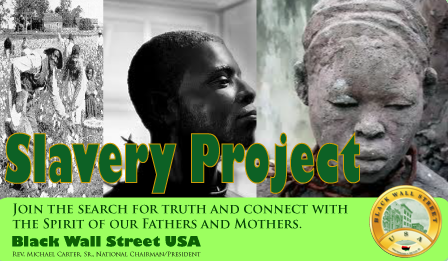
Alabama
Alaska
Arizona
Arkansas
California
Colorado
Connecticut
Delaware
Florida
Georgia
Hawaii
Idaho
Illinois
Indiana
Iowa
Kansas
Kentucky
Louisiana
Maine
Maryland
Massachusetts
Michigan
Minnesota
Mississippi
Missouri
Montana
Nebraska
Nevada
New Hampshire
New Jersey
New Mexico
New York
North Carolina
North Dakota
Ohio
Oklahoma
Oregon
Pennsylvania
Rhode Island
South Carolina
South Dakota
Tennessee
Texas
Utah
Vermont
Virginia
Washington
West Virginia
Wisconsin
Wyoming
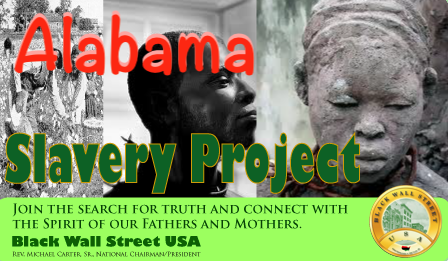
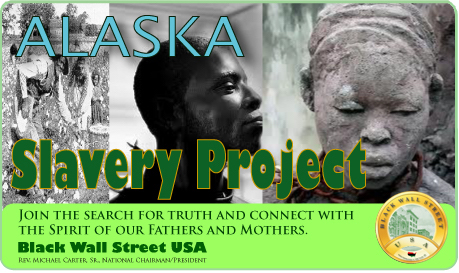



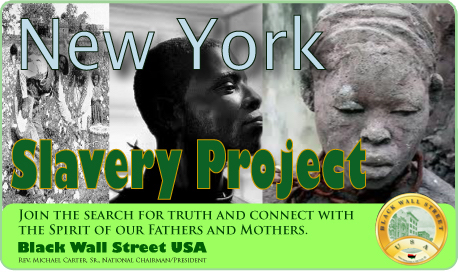

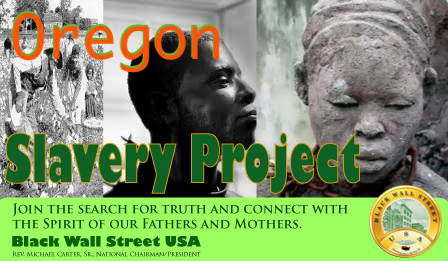
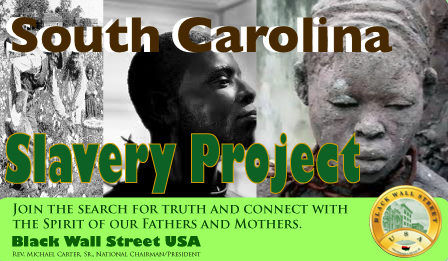
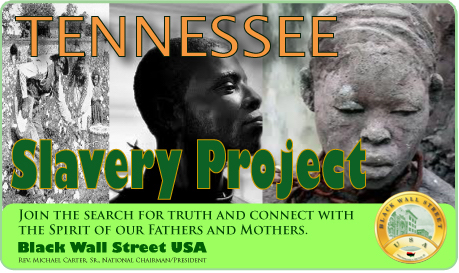
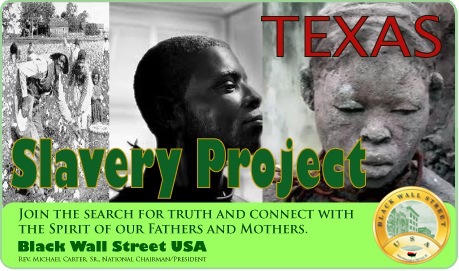



BlackWallStreet.org

Slave Records By State
See: Slave Records By State
Freedmen's Bureau Records
See: Freedmen's Bureau Online
American Slavery Records
See: American Slavery Records
American Slavery: Slave Narratives
See: Slave Narratives
American Slavery: Slave Owners
See: Slave Owners
American Slavery: Slave Records By County
See: Slave Records By County
American Slavery: Underground Railroad
See: American Slavery: Underground Railroad

